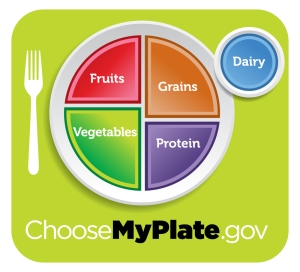Sleep Deprived?
August 21, 2012Bullying
September 18, 2012Hopefully you had a fun-filled summer that included a chance to enjoy a family reunion (an occasion where many members of an extended family get together). Family reunions tend to focus on renewing and strengthening family ties and bonds. They also offer opportunities to learn more about yourself and your family history.
Your family history is important in relation to your health. Family history is one of several factors that can contribute to a person’s weight. Additional factors that contribute to weight include behavior, habits, environment, genetics, metabolism (the way your body changes food and oxygen into energy) and perception. Your weight is one measure of your overall health. According to the Centers for Disease Control and Prevention, if your body mass index (BMI) falls into the overweight or obese category, you are at a higher risk for the following diseases and conditions:
- Coronary heart disease
- Stroke
- Type 2 diabetes
- Cancers (endometrial, breast and colon)
- Hypertension or high blood pressure
- Dyslipidemia (high blood cholesterol, high blood triglycerides)
- Liver and gallbladder disease
- Sleep apnea and respiratory problems
- Osteoarthritis (degeneration of cartilage and its underlying bone within a joint)
- Gynecological problems for females (abnormal menstrual periods and infertility)
Being “at risk” means that you are more likely to have a specific disease or condition than someone who has a BMI-for-age and a BMI percentile in the normal range. It does NOT mean that you are guaranteed to get the disease. BMI percentile is the most common screening tool to assess the weight status, size and growth patterns of individual children and teenagers from 2 to 20 years of age.
| Weight Status Category | BMI Percentile |
| Underweight | Less than 5th percentile |
| Healthy Weight | 5th to less than 85th percentile |
| Overweight | 85th to less than 95th percentile |
| Obese | Equal to or greater than 95th percentile |
“Overweight and obese are terms that refer only to an estimate of a person’s fatness. They do not in any way reflect on a person’s competence, self-discipline, drive or ability to lead a healthy lifestyle.”-Academy of Nutrition and Dietetics
A lifestyle that includes getting regular physical activity and eating smarter are vital for reaching and maintaining a healthy weight. Here are a few recommendations from the Academy of Nutrition and Dietetics:
- Start with a plan for lifelong health. Focus on the big picture— achieving overall good health—not just short-term weight loss.
- Set healthy, realistic goals. You are more likely to succeed in reaching realistic goals when you make changes step-by-step. Start with one or two specific, small changes at a time. Track your progress by keeping a food and activity log.
 Eat at least three meals a day and plan your meals ahead of time. Whether you’re eating at home, packing a lunch or eating out, an overall eating plan for the day will help keep you on track.
Eat at least three meals a day and plan your meals ahead of time. Whether you’re eating at home, packing a lunch or eating out, an overall eating plan for the day will help keep you on track.- Balance your plate with a variety of foods. Half your plate should be filled with fruits and vegetables, about one fourth with protein foods like lean meat, poultry, fish, beans, nuts or seeds, and one fourth with grains. To round out your meal, add fat-free or low-fat milk, yogurt or cheese.
- Start your meal with low calorie foods like fruits, vegetables and salads. These foods are packed with nutrients your body needs.
- Focus on your food. Pick one place to sit down and eat at home. Eating while doing other things may lead to eating more than you realize. Also, switching from a large plate to a smaller plate may help you feel satisfied with reduced portions.
- Get moving! Children and teenagers should be physically active for 60 minutes most days of the week.
- Put action into your lifestyle. Limit television, video games or computer time to one to two hours a day (this decreases sedentary time – the time you spend being physically inactive). Being active at an early age can lead to a lifelong habit of physical activity and promote a healthy weight throughout adolescence and adulthood.
- Find balance between food and physical activity. Plan regular physical activities as a family. Take an after-dinner family walk three days a week—or schedule a weekly Saturday afternoon trip to the park.
Are you and/or your family are ready to make changes in your lifestyle and move toward a healthier weight? Contact your RAHS clinic!
Author Allison Shannon, RD, MPH, is a Clinical Dietitian with the Regional Alliance for Healthy Schools.
(Sources: Academy of Nutrition and Dietetics, Centers for Disease Control and Prevention)


